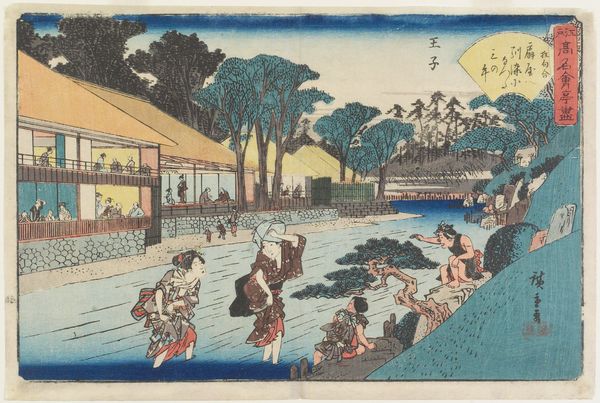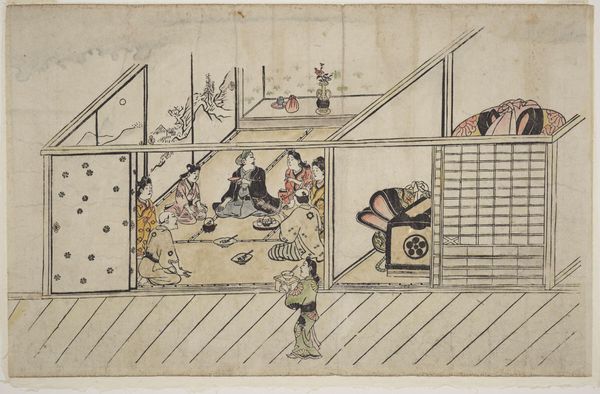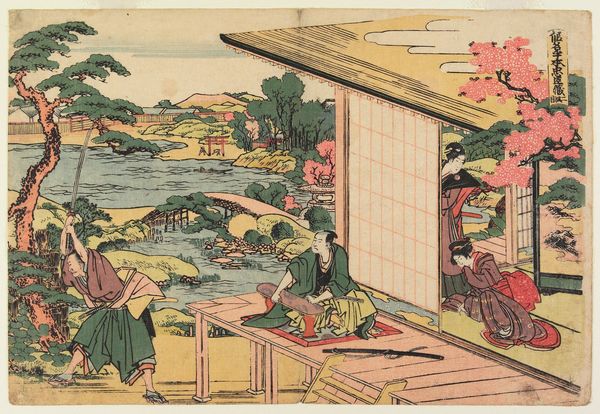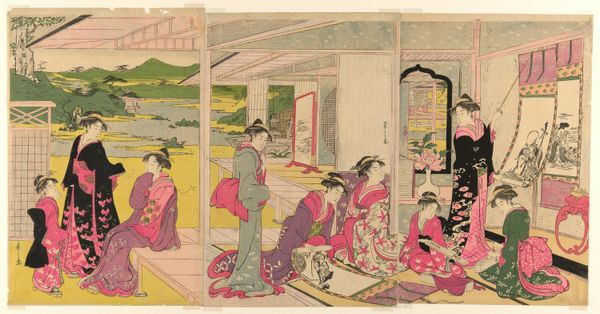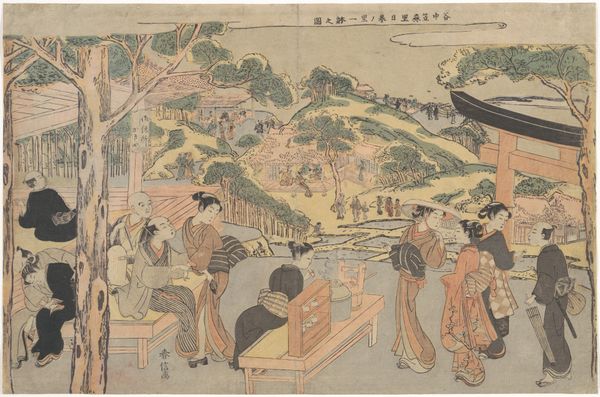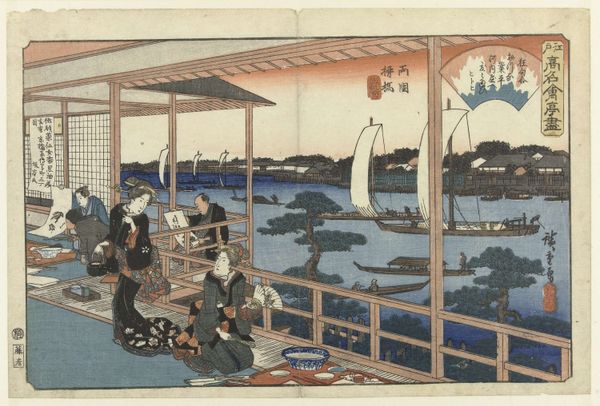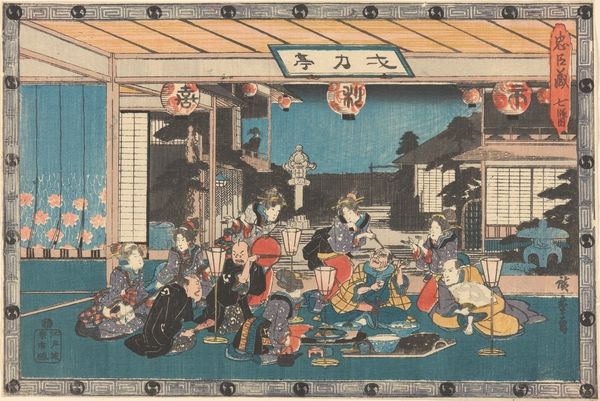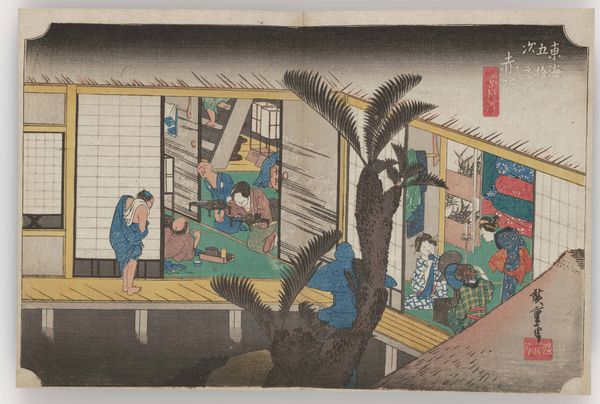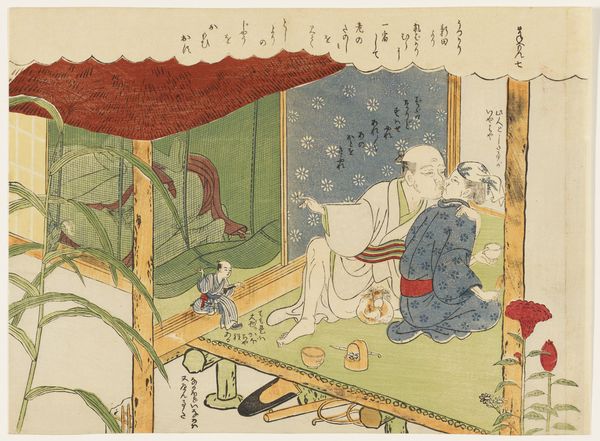
Dimensions: 8 3/4 × 13 3/4 in. (22.2 × 34.9 cm) (image, horizontal ōban)
Copyright: Public Domain
Utagawa Hiroshige designed this woodblock print, Ushijima- Musashiya Restaurant, in 19th century Japan. It depicts a scene of leisure and social interaction in a restaurant overlooking a lush garden. Consider how the image creates meaning through visual codes, cultural references, and historical associations. The composition emphasizes the relationship between the interior and exterior spaces, reflecting the Japanese appreciation for nature and harmony. The figures within the restaurant engage in various activities, such as dining and conversation, offering a glimpse into the social life of the time. The print's production occurred during the Edo period, a time of relative peace and prosperity in Japan under the rule of the Tokugawa shogunate. This era witnessed the growth of urban centers and a flourishing merchant class, which led to increased demand for entertainment and leisure activities. The Musashiya restaurant may have catered to this emerging clientele, providing a space for socializing and enjoying the natural beauty of the surroundings. By studying historical documents and visual sources, we can gain a deeper understanding of the artwork's cultural significance and its role in shaping social norms. Remember that the meaning of art is contingent on its social and institutional context.
Comments
minneapolisinstituteofart almost 2 years ago
⋮
The customer seated on the left who is playing the popular parlor game ken with a woman is believed to be the artist Hiroshige himself, who seems to be indicating that he was actively going to famous restaurants as well.
Join the conversation
Join millions of artists and users on Artera today and experience the ultimate creative platform.
